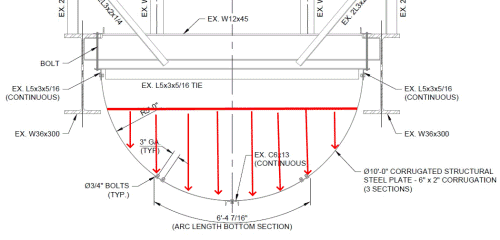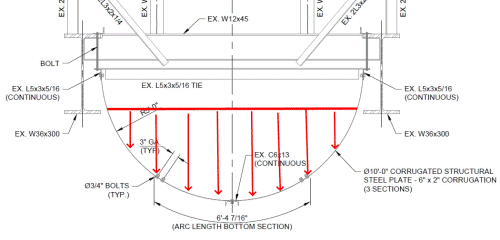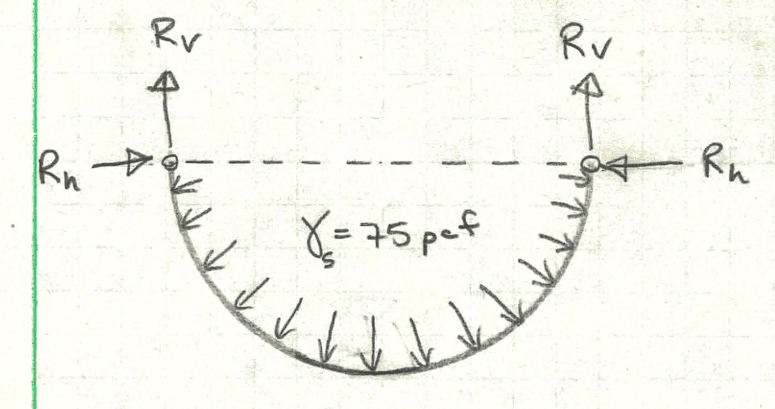RB - Your solution assumes that CSP is rigid (even when loaded) which makes the analysis a straight-forward statics problem. Not totally true, but pretty good for CSP... there is an operational issue with slurry that will make this error seem like peanuts... I'll get into that later.
1) Solving with statics, agree that CSP supports only the vertical slurry load.
The L5x3 is assumed to take all horizontal load. Think of as being somewhat like a cantilever retaining wall. With a horizontal support at the top of the retaining wall, the wall is assumed to be a simple span with triangular loading. Without the horizontal support at top of the retaining wall, the wall is... cantilevered with triangular loading.
2) Shear rupture controlling does not surprise me. Fairly common mode of failure; believe the 2007 sudden collapse of the
bridge in Minneapolis, MN was caused in part by shear rupture of undersized gusset plates.
Slurry Issues: I've had projects at our coal-fired electric generating stations involving slurry (from thickener underflow of limestone-based, wet flue gas desulphurization systems, i.e. "scrubbers").
Slurry is water containing suspended solids. In your case 75 pcf = 62.4 pcf (water) + 12.6 pcf (suspended solids). Without near constant agitation, the solids will settle out of suspension. The solids from our system are "sticky" and tend to build up on surfaces. The same will almost certainly happen to your project's flume. Suggest checking with plant operations on the properties of solids and include an allowance in your loading for solids buildup.
An example of how bad this can get. Inside one scrubber, a structural beam was had solids so thick that it visibly deflected, say, about L/50. Had to come up with a way to increase beam's moment of inertia without removing it.
Seems like your are continuing to upgrade your house the right way... excellent.


![[tongue] [tongue] [tongue]](/data/assets/smilies/tongue.gif) (I reply in the spirit of fun, not in one of combativeness.)
(I reply in the spirit of fun, not in one of combativeness.) ![[bigsmile] [bigsmile] [bigsmile]](/data/assets/smilies/bigsmile.gif)

